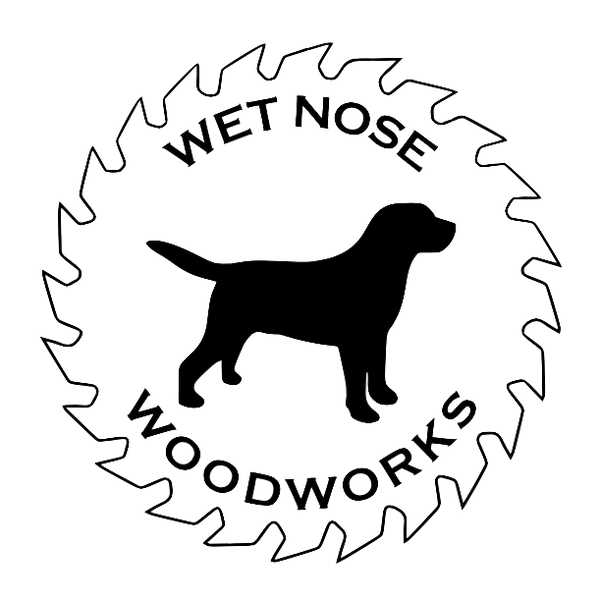
End Grain vs. Edge Grain Cutting Boards: What’s the Difference?
If you’ve ever gone shopping for a wooden cutting board, you’ve probably noticed the words end grain or edge grain (sometimes called flat grain). At first, they might sound like woodworking jargon, but they actually describe how the board is put together — and that makes a big difference in how it performs in your kitchen.
I’ve spent a lot of time in the shop making both types of boards, and I’ve also used them daily in my own kitchen. Here’s what I’ve learned about the pros and cons of each, and what to keep in mind when choosing the right one for your cooking style.
What Is an Edge Grain (Flat Grain) Board?
Edge grain boards are probably the most familiar type. Imagine taking several strips of wood, lining them up side by side, and gluing them together. The “edges” of those strips make up the cutting surface. That’s why edge grain boards often have a striped look, showing long stretches of wood grain running the length of the board.
- How they feel to use: Edge grain boards are lighter and easier to move around. They’re great for everyday kitchen tasks.
- How they age: Since the knife blade cuts across the wood fibers, you’ll see knife marks sooner than you would on an end grain board. It doesn’t mean the board won’t last — it just develops a “used” look faster.
- How they treat knives: They’re a little harder on knives compared to end grain, but still gentler than plastic or glass boards.
I think of edge grain boards as the “workhorses” of the kitchen — dependable, practical, and usually a little easier on the wallet.

What Is an End Grain Board?
End grain boards take a different approach. Instead of lining up long strips, small blocks of wood are arranged so the ends of the fibers face upward. If you’ve ever seen a checkerboard-style cutting board, that’s end grain.
- How they feel to use: End grain boards are heavy and stable. Once you set one on the counter, it doesn’t slide around.
- How they age: Because the knife slips between the wood fibers instead of cutting across them, the surface tends to “self-heal.” Knife marks are much less noticeable, and the board looks fresher longer.
- How they treat knives: End grain is the friendliest surface you can give your knives. That’s why many chefs swear by them.
These boards take more time, skill, and wood to build, which makes them pricier. But if you cook often, they’re an investment that can last decades with the right care.

A Little History
There’s a reason you’ll see end grain butcher blocks in old kitchens or meat shops. Before plastics were widely used, end grain wood was the gold standard because it stood up to daily heavy use while also being easy on knives. Edge grain boards became popular as a more affordable, lighter option that still had plenty of durability for home cooking.
So in a way, choosing between end grain and edge grain is deciding between tradition and practicality — but there’s no wrong answer.
So Which One Should You Choose?
Here are a few things to think about:
- How often do you cook? If you’re chopping vegetables every night and using good knives, an end grain board will pay off over time. If you cook a few times a week and want something solid but simple, edge grain will serve you well.
- What’s your budget? Edge grain is usually the more affordable option. End grain costs more because of the extra craftsmanship involved.
- How much space do you have? End grain boards are often heavier and bulkier. If you like to keep your board on the counter as a statement piece, this can be a plus. If you prefer to tuck it away, edge grain might be easier to manage.
No matter which way you go, here’s what I recommend looking for:
- Hardwoods like maple, walnut, or cherry (these are durable and food-safe).
- A solid build — thickness matters for stability.
- A food-safe finish (like mineral oil or board butter) that protects against moisture.
Final Thoughts
The truth is, both edge grain and end grain cutting boards have their place in the kitchen. Edge grain is reliable, lighter, and budget-friendly. End grain is a classic choice for anyone who values knife care and wants a board that looks beautiful even after years of use.
What I love about making these boards is that no two are exactly alike — each piece of wood has its own grain, color, and character. Whether you go for edge grain or end grain, you’re bringing a little bit of that natural beauty into your kitchen.
And whichever type you choose, remember: the secret to a long-lasting board is care. A little oil now and then makes all the difference. (I’ll cover that in more detail in another post soon.)
